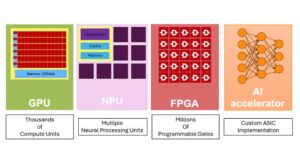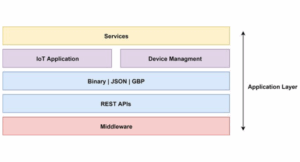An embedded processor is a microprocessor designed to perform a dedicated function within a larger mechanical or electrical system. Unlike the general-purpose processors found in personal computers or servers, embedded processors are optimized for specific tasks and are “embedded” into devices that are not primarily computers. Where are embedded processors used? The applications for embedded […]
How does deep learning actually work?
Deep learning has added a new dimension to engineering applications, from 5G signal processing to predictive maintenance in power grids. It automatically detects equipment failures and optimizes network traffic with accuracy. But how do these artificial systems actually learn from data? This FAQ explores the fundamental architecture of neural networks, the two-phase learning process that […]
What are the hardware strategies for building energy-efficient AI accelerators?
Artificial intelligence (AI) applications are spreading to more industries every day. However, the amount of energy used by these AI systems has become a significant issue. Modern deep neural networks require a considerable amount of computing power. This article examines five key hardware strategies for building energy-efficient AI acceleration: dedicated accelerator architectures, analog in-memory computing, […]
What is ‘compute-in-memory’ and why is it important for AI?
If you are running AI workloads, here is something that might surprise you. Your processors are wasting more energy shuffling data around than actually doing the calculations you care about. This inefficiency is becoming a serious limit for the next generation of artificial intelligence systems. As neural networks grow to billions of parameters, traditional von […]
What are the different key layers of IoT architecture? part 2
This second part of the FAQ discusses the three upper layers of the IoT architecture, which extend beyond the physical and network layers. The middleware layer processes and manages raw IoT data from connected devices. The application layer provides user interfaces and visualization tools. The business layer converts technical capabilities into actionable business outcomes. Part […]
What are the different key layers of IoT architecture? part 1
A layered Internet of Things (IoT) architecture provides modularity, scalability, and flexibility, allowing each layer to focus on specific tasks and technologies. This FAQ series covers the five-layer IoT architecture and explains why it is a commonly used framework. This first part focuses on the first two layers. IoT Architecture provides a structured framework for […]
A survey of Wi-Fi connectivity modules for IoT applications: part 4
This last FAQ in this series will cover Broadcom, Telit Cinterion, and Renesas’s latest innovations in Wi-Fi connectivity solutions for IoT applications. These innovations continue to focus on Wi-Fi 6 and 7 technologies, which offer improved speed combined with other features. Broadcom: BCM43740/43720/47722/6765/6726/67263 Broadcom’s BCM43740/43720/47722/6765/6726/67263 are the latest versions of the company’s Wi-Fi modules, featuring […]
A survey of Wi-Fi connectivity modules for IoT applications: part 3
In this third of the multipart FAQ, we continue to survey three more Wi-Fi modules for IoT applications manufactured by Silicon Labs, NXP Semiconductors, and MediaTek. All three modules support advanced Wi-Fi standards, starting with Wi-Fi 6, which aligns with the current developments in the Wi-Fi industry. ©Silicon Labs: SiWG917 The SiWG917 SoC from Silicon […]
A survey of Wi-Fi connectivity modules for IoT applications: part 2
This second part of the multipart FAQ will focus on Wi-Fi modules from u-blox and Microchip Technology. u-blox, a Swiss company primarily known for GPS and cellular technologies, has recently expanded into Wi-Fi modules. Microchip Technology is based in the US and is known for developing low-power connectivity options for IoT applications. u-blox: MAYA-W4 Series […]
A survey of Wi-Fi connectivity modules for IoT applications part 1
Wi-Fi connectivity has become important for many IoT ecosystems, enabling data exchange with cloud servers and facilitating real-time monitoring. This multipart FAQ on Wi-Fi connectivity for modules for IoT applications will focus on 10 prominent manufacturers and their modules that every electronics engineer should know. This first part focuses on Expressif Systems and Texas Instruments, […]









